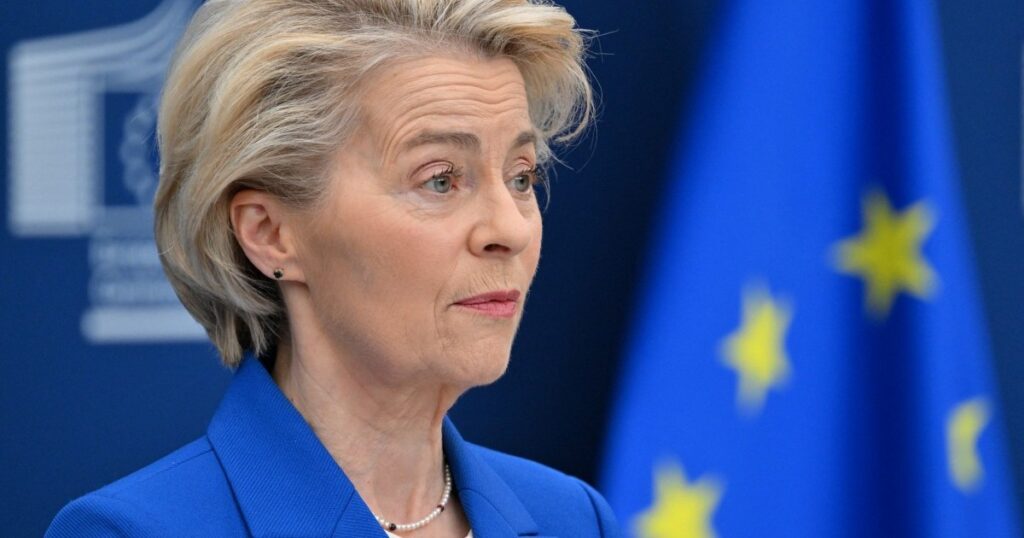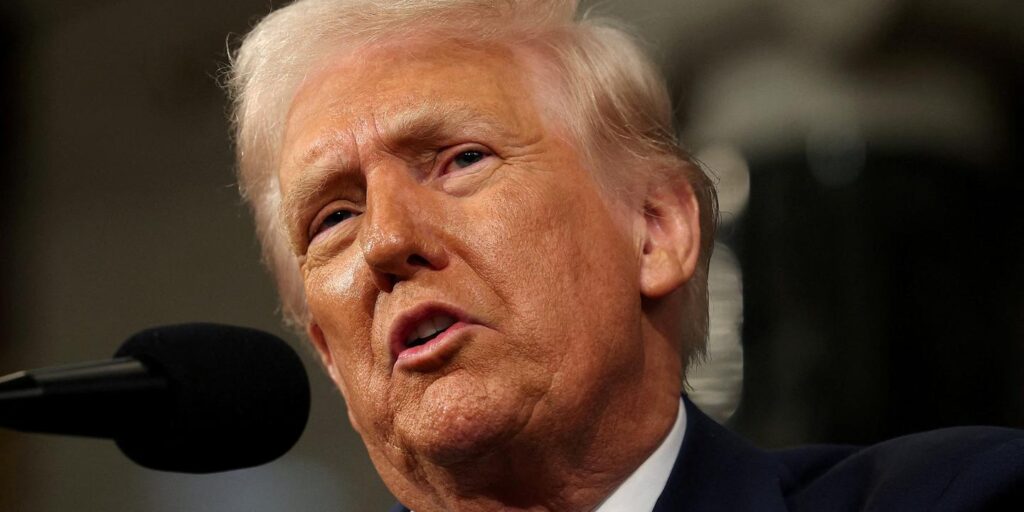United States President Donald Trump is scheduled to hold crunch talks with European Union chief Ursula von der Leyen in Scotland after weeks of intense trade talks between the two sides as Brussels aims to ink a deal with Washington to avoid a transatlantic trade war.
Von der Leyen, the European Commission president, will meet with the US president at his Turnberry golf club in Scotland on Sunday. European ministers are hoping the meeting will result in a deal to avoid the 30 percent tariffs that Trump has threatened on EU goods.
According to people involved in the talks, European negotiators are aiming for tariffs to be set at 15 percent. Trump told reporters on Friday that the bloc “want(s) to make a deal very badly”.
On July 12, Trump threatened to impose the 30 percent tariffs if no agreement could be secured by his deadline, which expires on Friday. That would come on top of the 25 percent tariffs on cars and car parts and 50 percent levies on steel and aluminium already in place.
The EU, Washington’s biggest trading partner, has been a frequent target of Trump’s escalating trade rhetoric with the president accusing the bloc of “ripping off” the US.
In 2024, EU exports to the US totalled 532 Billion Euros ($603bn). Pharmaceuticals, car parts and industrial chemicals were among the largest exports, according to EU data.
Will the Trump-von der Leyen meeting achieve a breakthrough and end the uncertainty in transatlantic trade ties?
What are the main differences between the two sides?
The US president told reporters at Turnberry on Friday that there are “20 sticking points”.
When asked what they were, he said: “Well, I don’t want to tell you what the sticking points are.”
At the same time, he described von der Leyen as a “highly respected woman” and predicted their meeting on Sunday would be “good”, rating the chances of a deal as “50-50”.
On the European side, it is understood that a growing number of EU countries are calling for Brussels to push ahead with an already prepared retaliatory tariffs package on 90 billion euros ($109bn) of US goods, including car parts and bourbon, if talks break down.
The two sides, which traded 1.6 trillion euros ($1.8 trillion) in goods and services in 2023, have been negotiating since April 9 when Trump paused what he calls his “reciprocal” tariffs, which he placed on nearly all countries.
During that time, the US has been charging a flat 10 percent levy on all EU products as well as 25 percent on cars and 50 percent on steel and aluminium.
This month, EU Trade Commissioner Maros Sefcovic said: “We have to protect the EU economy, and we need to go for these rebalancing measures.”
Still, the bloc is understood to be rife with disagreement over trade policies with the US. While Germany has urged a quick deal to safeguard its industries, other EU members, particularly France, have insisted EU negotiators must not cave in to an asymmetrical deal that favours the US.
On Saturday, von der Leyen spokesperson Paula Pinho said: “Intensive negotiations at technical and political (level) have been ongoing between the EU and US. Leaders will now take stock and consider the scope for a balanced outcome that provides stability and predictability for businesses and consumers on both sides of the Atlantic.”

What have the US and EU traded with each other?
In 2024, the US-EU goods trade reached nearly $1 trillion, making the EU the single largest trading partner of the US.
In total, the US bought $235.6bn more in goods than it sold to the 27 countries that make up the EU. On the other hand, the US earned a surplus on services trade with the EU.
The US mainly bought pharmaceutical products from the EU as well as mechanical appliances, cars and other nonrailway vehicles – totalling roughly $606bn.
The US exported fuel, pharmaceutical products, machinery and aircraft to the EU to the tune of $370bn.
Why have they struggled to ink a deal so far?
Like all the nations the US runs a trade deficit with, Trump has long accused the EU of swindling his country and is determined that Brussels adopt measures to lower its goods trade surplus with the US.
Washington has repeatedly raised concerns over Europe’s value-added tax as well as its regulations on food exports and IT services. Trump has argued that these controls act as nontariff trade barriers.
Indeed, Sefcovic recently told the Financial Times that he wants to reduce the US-EU trade deficit by buying more US gas, weapons and farm products.
And while European leaders want the lowest tariffs possible, they “also want to be respected as the partners that we are”, French President Emmanuel Macron said on Wednesday.
On July 14, meanwhile, Danish Foreign Minister Lars Lokke Rasmussen told reporters in Brussels that “we should prepare to be ready to use all the tools”.
He added: “If you want peace, you have to prepare for war.” Negotiators in Scotland are hoping it doesn’t come to that.
This month, Oxford Economics, an economic forecasting consultancy, estimated that a 30 percent tariff could push the EU “to the edge of recession”.
Countermeasures from the EU would also hit certain US industries hard. European tariffs could reduce US farmers’ and auto workers’ incomes, which are key Trump constituencies.


